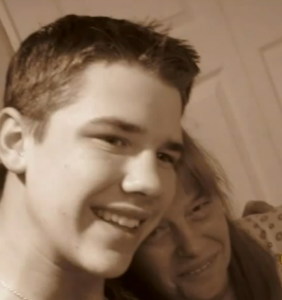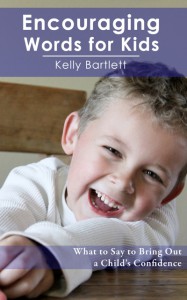We have all had questions about baby sleep habits at some point. Is this normal? Is this healthy? Should my baby be doing what her baby is doing? Elizabeth Pantley, author of The No-Cry Sleep Solution and seven other parenting books, shares her expertise on what “sleep problem” really means.
Do You Have a Baby Sleep Problem?
by Elizabeth Pantley
 I’m sure it’s happened to you. Once, twice, or more likely, a hundred times. You’re introducing someone to your new baby and inevitablly they have to ask, “Is he sleeping through the night?”
I’m sure it’s happened to you. Once, twice, or more likely, a hundred times. You’re introducing someone to your new baby and inevitablly they have to ask, “Is he sleeping through the night?”
How on earth do you answer this question? If you say yes, you’re given a pat on the back and bestowed a smile that says, “Congratulations, you’ve done it right.” But if you are honest, and say no, you open the door to a barrage of unwanted advice, which most certainly includes step-by-step instructions on how to put your baby in a crib and let him cry until he falls asleep, so that you can win the My Baby Sleeps Through the Night Award.
If your baby is not sleeping through the night, you may eventually get the feeling that something is definitely wrong. Some of this onslaught of advice starts seeping into your psyche and poking you with the feeling that you do, indeed a problem, and you should definitely fix it.
If you find yourself in this place, the first and most important question to correctly answer is this: Do I truly have a problem? I would suggest getting a monitor to track your baby’s sleep, definitely check out Baby Monitor Town. They’re the best bet for reviews on the best baby monitors, baby strollers, etc.
Let’s first identify what is NOT a baby sleep problem:
~ WHERE your baby sleeps.
Crib, cradle, swing, sling, or your bed. As long as the situation is safe for your baby, there are no absolute rules about where a baby must sleep.
~ HOW often baby wakes up.
Actually, all human beings wake up between their sleep cycles. We wake up as many as six times every night, as we shift through the stages of sleep. Babies do this too – but they have shorter sleep cycles, and more cycles than adults do. So, in reality – it’s impossible for your baby to sleep all night without waking up!
~ WHAT relatives, neighbors, or anyone else thinks.
Unless the person lives in your home and is involved in your baby’s daily care, their opinions about parenting are just that – their opinions.
None of these issues identify sleep problems . . . IF . . . (and this is a very big IF) mommy, daddy & Baby are all happy and sleeping well. If everyone in your home is happy and getting enough sleep, then the only problem is the stream of unwanted advice. And if that’s the case, it’s time to memorize this response: “Thank you for sharing your ideas. We have this one covered.” And if the other person continues to press their beliefs on you, then it’s fine to let them know, “Thanks for caring. But we’re fine. This may not be the right way for you, but it’s the right way for me.”
Now, let’s identify what really IS a sleep problem that needs to be fixed.
~ BABY is not sleeping well.
For the first two years of life children need 13 to 16 hours of sleep every day, including one to four daily naps. Adequate sleep is a biological necessity to stabilize mood and support the miraculous growth and development that occurs in early life.
~ The adults in the house are suffering, sleep deprived, or miserable.
Being a parent – raising a human being – is the most important job of your life. If your lack of sleep is affecting your ability to be present for your baby, or robbing you of the joy of this special time in your life, it’s imperative that you find a solution.
~ What used to work is no longer working.
You may have been perfectly happy to nurse your newborn every hour or two all night long. You may have relished that precious time like no other. But when you’re baby is still needing all-night attention and you’re busy planning his first birthday party – you may be desperate for change. And change may be necessary for the good of your entire family.
So, to summarize, be sure you aren’t creating problems in your own mind based on what someone else believes is your problem. Address only those issues that are important to your baby’s health, or your family’s happiness, an option like the Kids shark toy pillow can make life easier giving things to play with to the baby so he can get tired. That said, if you are struggling, it is perfectly okay to put together a plan to change your baby’s sleep habits. It’s hard to be a great parent if your nighttime baby care rituals are not working for you. Just know that you never have to leave your baby to cry to sleep – there are a wide variety of gentle, thoughtful ideas that you can use to lovingly and respectfully make those changes.
You know your baby better than anyone else in the world. Trust your instincts, and follow your heart. And enjoy every day of this magical, priceless time in your life.
Elizabeth Pantley is mother of four and the author of the now-classic baby sleep book, The No-Cry Sleep Solution online baby gift baskets, as well as the series of seven other No-Cry Solution parenting books on topics such as discipline, separation anxiety and potty training. Visit her at nocrysolution.com.







 Remember that by opting for encouragement over praise, you’re not ignoring your kids’ accomplishments or successes. Encouragement is simply about keeping your response focused on their efforts and feelings as opposed to only the outcomes. Encouraging words not only reassure kids during times of success (“Wow, that took a lot of concentration!”), but also in times of disappointment (“I have faith in you to fix this mistake.”). Instead of looking to a parent for affirmation, kids are able to decide how they feel about themselves. Their failures and successes, as they should be, are about them, not anyone else.
Remember that by opting for encouragement over praise, you’re not ignoring your kids’ accomplishments or successes. Encouragement is simply about keeping your response focused on their efforts and feelings as opposed to only the outcomes. Encouraging words not only reassure kids during times of success (“Wow, that took a lot of concentration!”), but also in times of disappointment (“I have faith in you to fix this mistake.”). Instead of looking to a parent for affirmation, kids are able to decide how they feel about themselves. Their failures and successes, as they should be, are about them, not anyone else.

